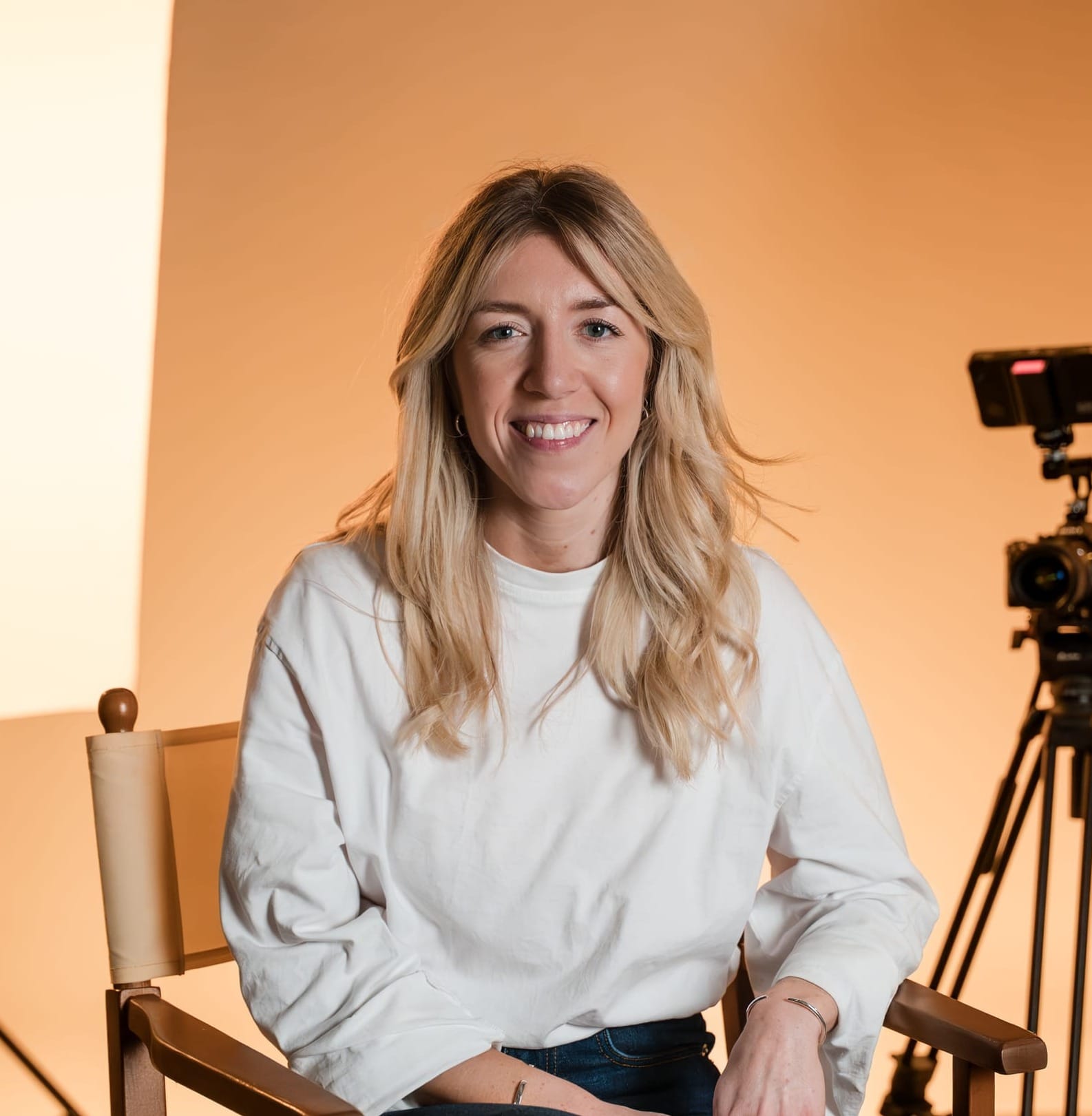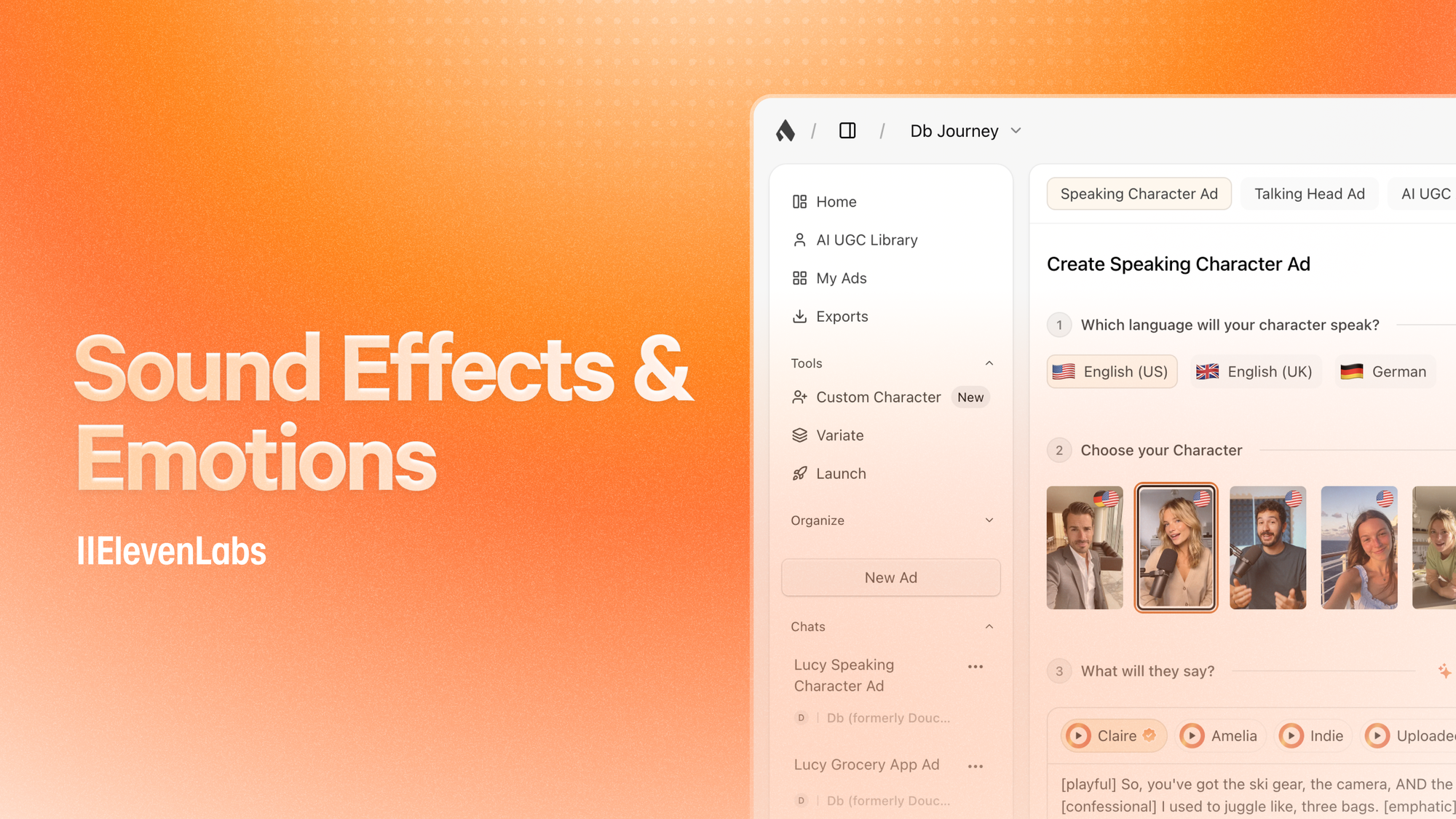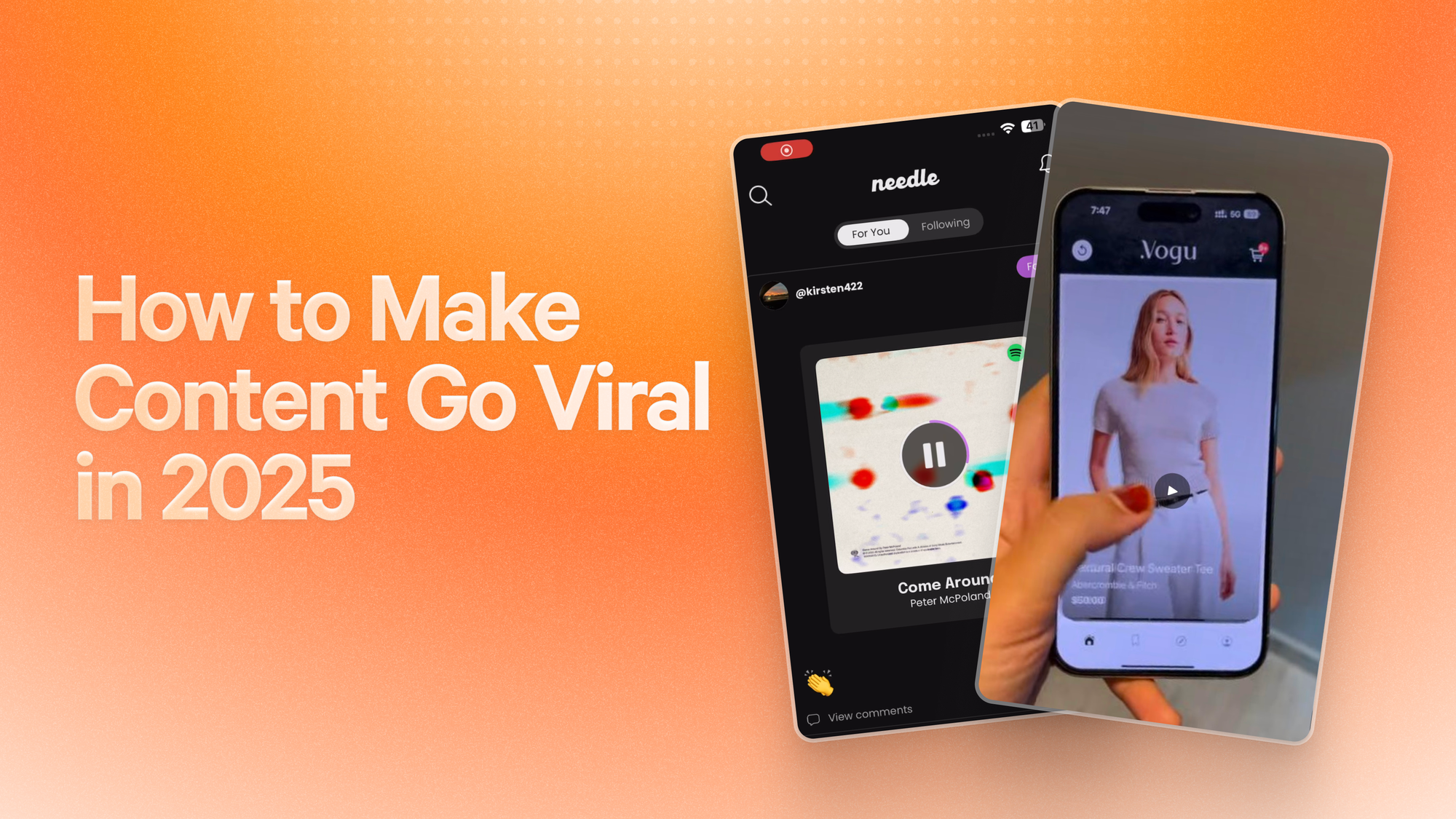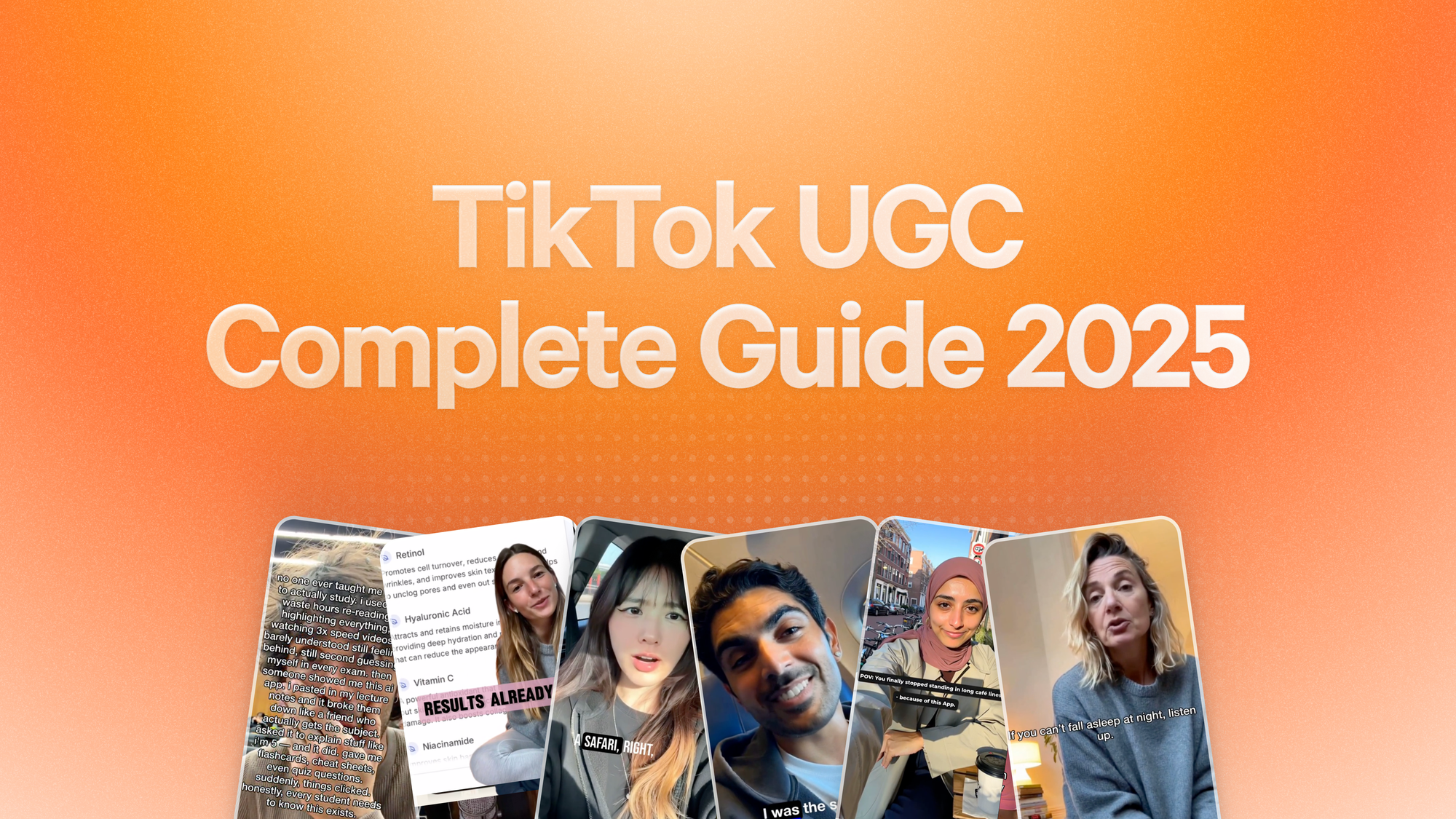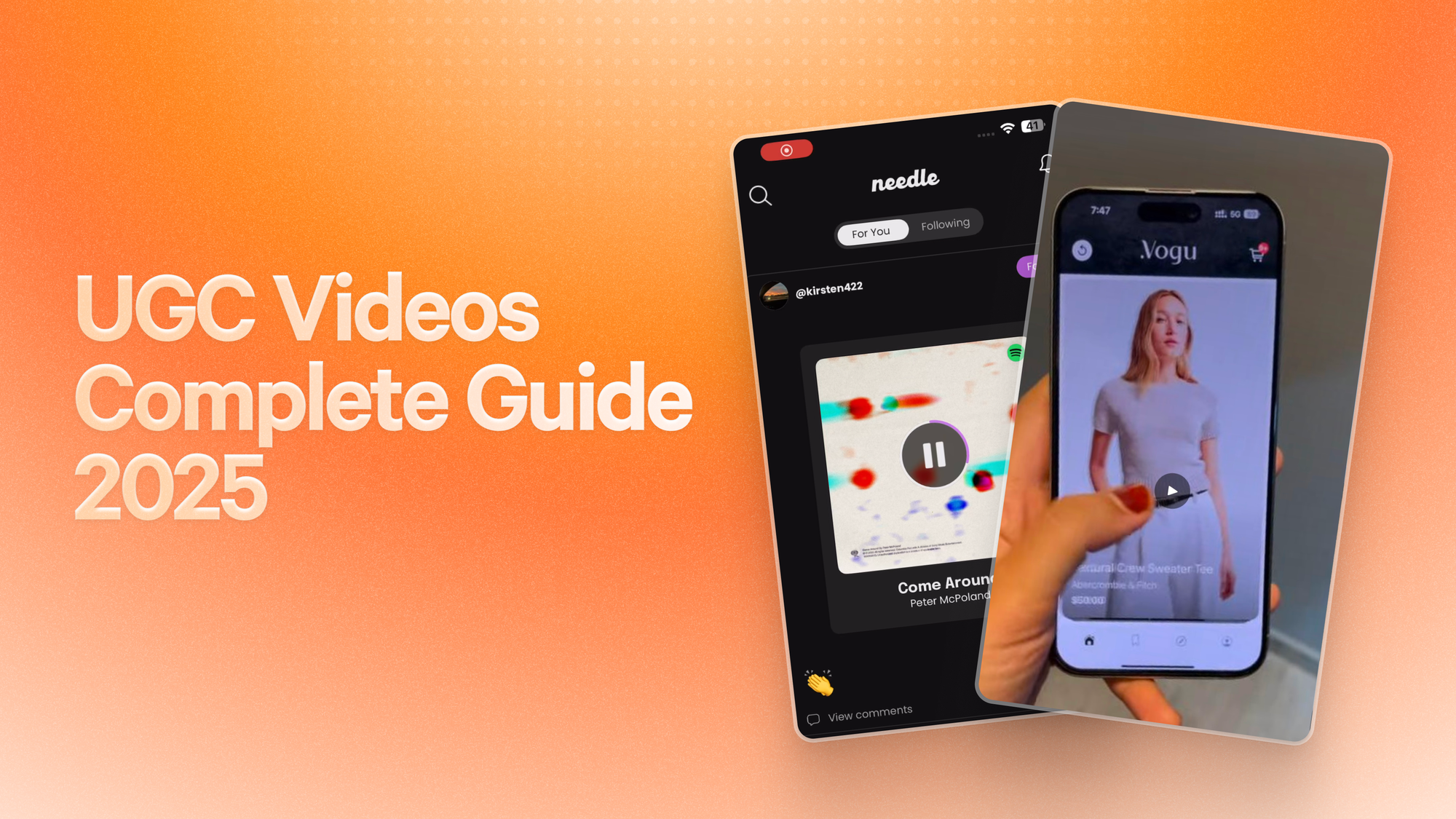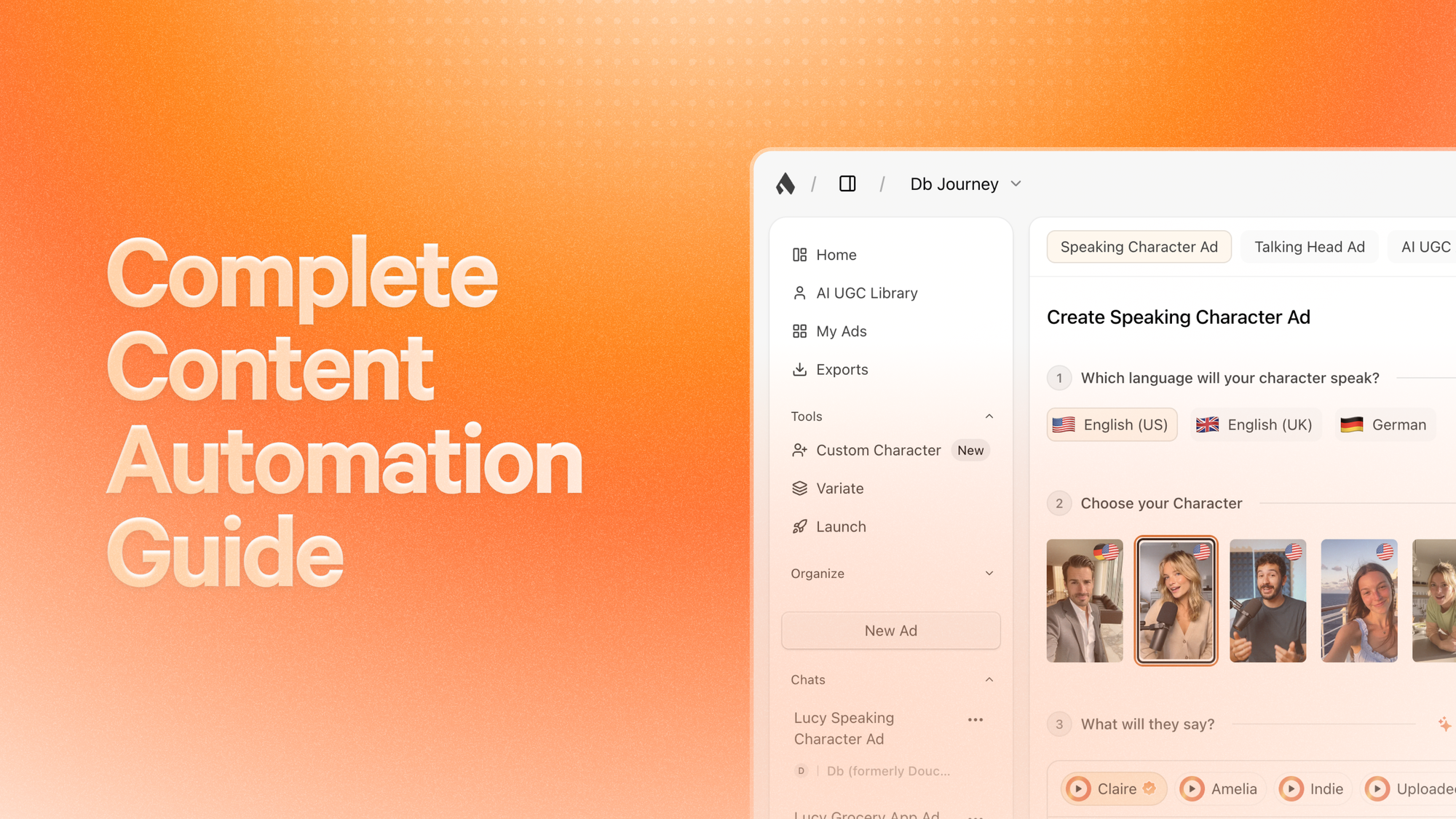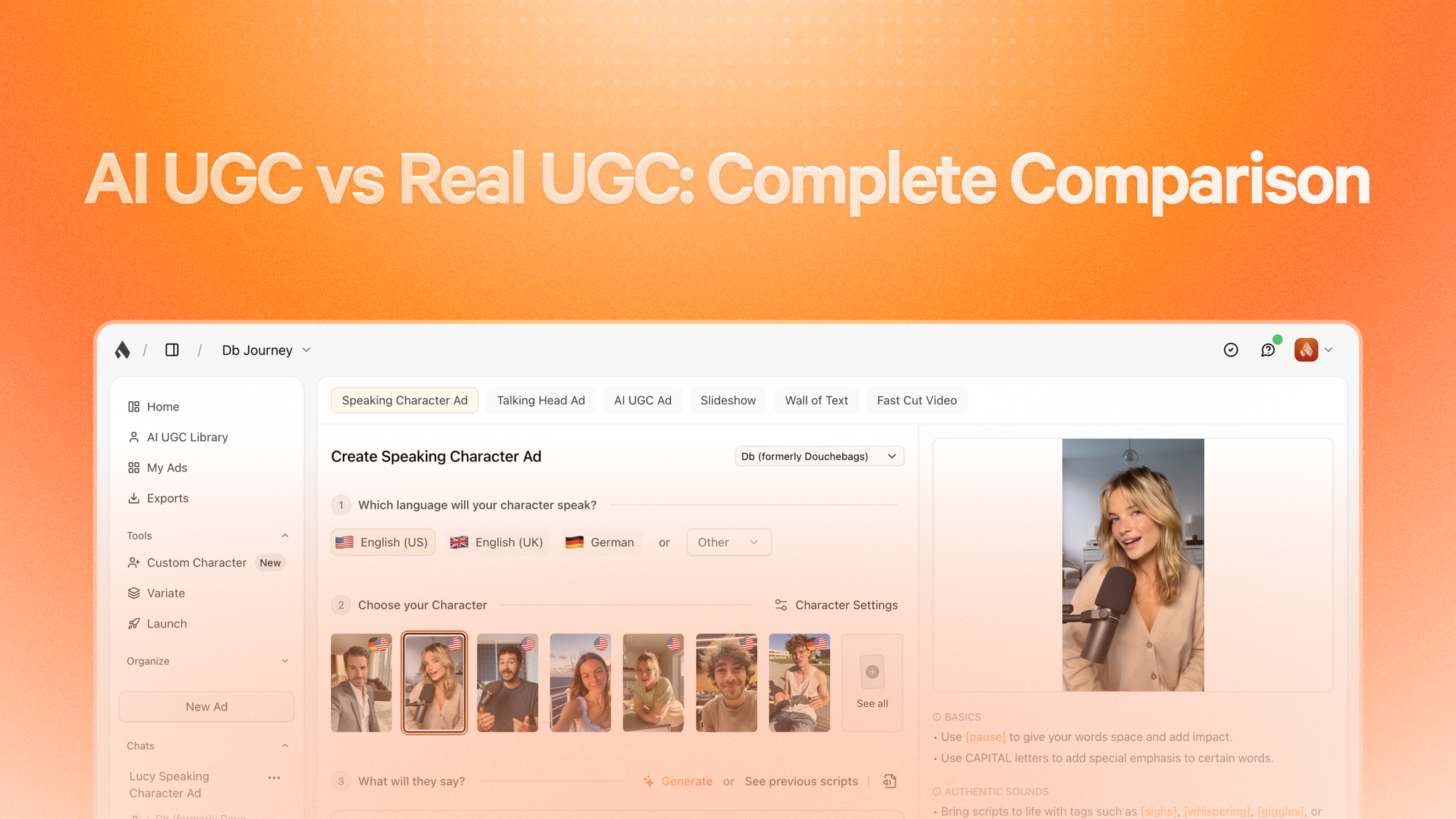You built something amazing. Now let's get people to actually use it.
The Ultimate Founder's Guide to Getting Your First 1,000 Users
The Reality Check: The Game Has Completely Changed
A few years ago, building a great product was often enough. Create something valuable, and customers will gradually find you. Those days are over.
Today's reality is different. The challenge isn't that great products don't matter anymore. It's that great products need to be discovered, and discovery requires intentional effort.
Now it's all about distribution. The most successful startups win with first-mover advantage in distribution, not just product features. Incredible products are sitting in digital graveyards because founders couldn't figure out how to get them in front of people who need them.
Customer acquisition is the #1 challenge for startups. If you're a technical founder, you might feel like marketing is outside your wheelhouse. That's completely understandable.
We get it. You're good at solving problems, not convincing strangers to care about your solution. But that’s wrong.
Here's a sad reality: The majority of startups fail because they are simply invisible (and another part because they have too high customer acquisition costs). First-mover advantage doesn't mean you can't catch up on the product. It means you can't catch up on distribution despite delivering an equally good or better product.
The good news: Marketing isn't magic. It's systematic problem-solving applied to getting customers.
Typical Misconception
"But shouldn't I focus on building the right product first?"
You've probably heard "you can't scale what people don't want," and that's absolutely true. Lack of market need kills startups faster than anything else.
If you try to market aggressively before understanding your product-market fit, you'll end up with expensive customers who don't stick around, driving your acquisition costs through the roof.
But here's the nuance most founders miss: you need some level of marketing to discover what people actually want. How else do you discover genuine market need without getting your product in front of real users?
So forget what you've heard about "build first, market later." That approach is backwards and will hurt your chances of success.
You need feedback from real users to build the right product—and you need marketing to find those users. If you haven't already built a community in your niche, some form of marketing is essential to connect with your early adopters.
The better approach: Treat your early marketing as learning experiments. Every piece of content, every conversation, every outreach attempt gives you data about what resonates with your potential customers.
When your messaging clicks and people start sharing your content or becoming enthusiastic early users, you're onto something. When your marketing feels like pushing a boulder uphill, having tried +30 messages over months, nothing worked, it might be time to revisit your problem-solution fit.
That's where organic (non-paid marketing) comes into play. But more later ;)
1. The Foundation - Marketing Demystified
Think of marketing as having conversations with people who need what you've built. That's it. Everything else is just finding better ways to have those conversations at scale.
Content Marketing: Being Helpful Before Selling
Content marketing is like being the friend who always has useful advice. You create helpful content like blog posts, social media posts, videos on YouTube that solves people's problems before they even think about buying from you.
Here's what works: A meal delivery startup doesn't just post photos of food. They share quick recipes, meal planning tips, and grocery shopping hacks. People find this helpful, remember the brand, and eventually become customers.
Performance Marketing: Paying for Results You Can Measure
This is advertising where you only pay when something specific happens, like someone clicks your ad, signs up for your newsletter, or makes a purchase. It's completely measurable, and you can see exactly what's working.
Think of it like paying a friend $5 for every person they bring to your party who actually shows up and has a good time.
Branding: Why People Choose You Over Competitors
Branding is how people feel about your company. It's your personality, values, and the experience people have when they interact with you. Good branding makes people choose you even when competitors cost less.
Apple is the perfect example: people pay more for Apple products not just for features, but because of how the brand makes them feel innovative, premium, part of something special.
Organic vs Paid: Two Different Engines
- Organic marketing: Free methods like social media posts, SEO, word-of-mouth. Takes longer to build but creates lasting relationships
- Paid marketing: Advertising where you pay for immediate visibility. Faster results but costs money and stops when you stop paying
Simple rule: Start organic to learn what works, then use paid to amplify your best content.
But where to start?
Organic vs Paid: Two Different Engines
- Organic marketing: Free methods like social media posts, SEO, word-of-mouth. Takes longer to build but creates lasting relationships
- Paid marketing: Advertising where you pay for immediate visibility. Faster results but costs money and stops when you stop paying
Simple rule: Start organic to learn what works, then use paid to amplify your best content.
Step 1: Actually Know Your Customers (Most Don't)
Most founders guess what customers want. Smart founders just ask them:
The 15-minute rule:
Interview 10 potential customers for 15 minutes each. Don't pitch anything. Just ask: "What's your biggest challenge with [relevant area]?" and "How do you currently handle [specific problem]?" Ask the right questions.
Find a few communities where your customers are (X, Reddit, Discord, LinkedIn, etc). Spend 30 minutes a week reading what they discuss. You will save you significant time later.
Read competitor reviews. Look for complaint patterns. That can inform your feature roadmap and messaging approach, handed to you for free.
When multiple people describe the same frustration using emotional language ("this drives me crazy," "such a waste of time"), you've found inspiration for your marketing message. Write it down and use their actual words.
Step 2: Build a Brand
Let's be honest. Most founders don't have the resources or skills to create polished branding from day one. Tools like Canva, Figma, and ChatGPT or freelancers on Fiverr help you to create a name, logo, brand materials and develop a good (founder) story.
Those viral businesses hitting multi-millions with TikTok aren't winning because of sophisticated brand-building. They're winning because they cracked the content code.
When someone scrolls TikTok and hears "I finally found a way to focus in meetings," they're not evaluating the brand; they're evaluating the message.
Here's the psychology: people trust peer recommendations 10x more than brand content because it feels like discovering something through a friend rather than being marketed to.
Traditional ads shouts "This is my brand and this is what I'm selling," while authentic organic content whispers "Hey, I tried this and it actually works." These are different approaches.
The real question isn't when to invest in branding. It's how much branding you need at each stage. And that depends entirely on your category, audience, and growth model.
The Channel-Specific Strategy
Don't choose between branded and unbranded content. These aren't competing strategies. They're solving different problems in your customer journey.
Use each where it works best. Viral content gets people to try you. Brand building gets them to stay and pay premium prices.
The TikTok success stories prove that great content can drive immediate sales without traditional branding. But sustainable businesses need both: the authentic discovery that drives initial purchase and the brand equity that creates repeat customers who become advocates.
Content-Led Channels (TikTok, Instagram Reels, Twitter): Focus on authentic demonstrations and real user experiences. Your content should feel like peer recommendations, not brand promotions. Show your product solving real problems without heavy branding or polished production values.
Brand-Led Channels (Website, LinkedIn, Newsletter, Email): Here's where consistent brand presentation converts interest into purchases. Professional visuals, clear value propositions, and cohesive storytelling help people trust you enough to hand over their credit card information.
How Important is Branding for my Category?
Here's a simple framework to save you from both under-investing (and looking amateur) and over-investing (and burning cash you need for product development).
- High-Trust Categories (Healthcare, Fintech, Baby Products): You're literally asking people to trust you with their money or their health. Zero room for unprofessional brands here. Invest in proper branding immediately. Non-negotiable from day one: A professional, trustworthy brand, quality/ regulatory compliance messaging and credibility signals, and visual consistency throughout the user journey.
- Social-First Impulse Categories (Fashion accessories, gadgets under $100, beauty impulse items): Content performance drives everything. Social media is the primary trigger for impulse buying, with TikTok ads having one of the greatest impacts. Invest in content creation and social presence, not brand assets initially.
- B2B SaaS/ Enterprise (Software, business tools, professional services): Thought leadership beats visual polish early on. B2B SaaS marketing requires 3-6 months to gain traction through content marketing and SEO. Professional presentation matters, but establishing expertise through content is your primary brand-building vehicle.
- Community-Driven Wellness (Fitness, mental health, lifestyle optimization, supplements): Transparency and authenticity are your currency, so a strong brand is crucial. Consumers are deeply concerned with the authenticity and trust of wellness brands. Build a community through transparent content that also shows your process, not just results.
- High-Stakes D2C (Premium consumer products, subscription services, home goods): Every touchpoint is your brand. From unboxing experiences to how your product looks in customer homes. You control the entire journey, which means you're responsible for all of it. This isn't only about your brand logo; it's about orchestrating moments that build loyalty.
3 Pro-Tips to Build a Brand
1. Create Your Own Category: Don't just make "another productivity app". Position yourself as pioneering "mindful productivity" or "anti-hustle efficiency." Use your best-performing content insights to reframe the problem you solve.
2. Develop an Authentic Voice: Let your personality shine through consistently. Are you the irreverent challenger? The thoughtful expert? The accessible friend? Your viral content will show you what voice resonates most with your audience.
3. Visual Consistency That Scales: Visuals account for 55% of brand perception. Always have consistent colors, fonts, and messaging. All your brand touchpoints should feel connected, even if they may look a bit different.
Step 3: Start with Your Website
Your website has one primary job: to help visitors quickly understand the value you're providing.
You can even skip the fancy animations and focus on this: can someone understand what you do and why they should care in 3 seconds?
Here's what works: Lead with the outcome, not the features. Instead of "AI-powered productivity platform," try "Cut your email time from 2 hours to 20 minutes." Then add a clear call-to-action, some social proof (even if it's just "Join 100 early users"), and see how people respond.
A practical validation test:
Show your website to five people who don't know your product. If they can't explain what you do after looking at it briefly, your messaging needs work.
Set up basic analytics (Google Analytics works fine) and actually look at the data. Track time on site, which pages people read, and where they drop off. This tells you what resonates and what doesn’t.
Step 4: Make Sure You're Being Found
Discoverability is key - not just on Google but across the platforms where people search for solutions.
Your potential customers are asking questions across ChatGPT, Perplexity, Claude, and many others. But don't ignore Google just because AI search is hot.
Google still drives the majority of web traffic, plus many AI platforms pull from Google's search results in real-time.
The essentials to get right:
- Get indexed properly: Submit your sitemap to Google Search Console and verify that only your important pages are being found (you don’t found 404 to be indexed).
- Keep it fast: Pages should load fast (test with PageSpeed Insights and adhere to benchmarks)
- Make it mobile-friendly: Most people will view your site on their phones
Ask ChatGPT: "What are 20 specific problems that [your target customer] would Google related to [your industry]?" Then create content that directly answers these questions.
Don't just target keywords but the actual questions people ask.
An Analysis of 30 million citations reveals that ChatGPT shows a clear preference for Wikipedia (47.9% of top citations), while Perplexity heavily relies on Reddit and review platforms. Each platform has different source preferences.
How to Win LLM Citations:
1. Structure for AI Understanding
- Use clear, hierarchical headings (H1, H2, H3)
- Provide direct answers immediately after questions
- Format with bullet points, lists, and tables
- Include specific stats and examples AI can cite
2. Create Citation-Worthy Content
- Original research and unique data points
- Clear, factual statements AI can quote
- Well-sourced information with proper attribution
- Comprehensive coverage of topics (not shallow content)
3. Platform-Specific Optimization To start with, ask these prompts:
- ChatGPT: "How do I optimize content so AI tools like you will cite my website as a source?"
- Claude: "What content format and structure makes it most likely for AI to reference my website?"
- Perplexity: Search your industry topics and see which sources get cited
Step 5: Choose Your Distribution Channels
Find channels where your customers already gather and discuss their problems. Become genuinely helpful there.
Master ONE distribution channel before trying others.
Don't try to be everywhere. That's how you fail at everything. Most businesses get zero distribution channels to work.
But if you can get just one channel to work, you can build on this.
The Fundamentals Checklist
- Optimize your homepage message (test with real people)
- Interview 10 potential customers and document your assumptions
- Set up basic website analytics and UTM parameters in shared URLs to understand visitor and conversion behavior
- Fix discoverability for Google and LLMs (keywords, indexing)
- Join communities where your customers spend time and share helpful insights, not pitches
The Bottom Line
Think of every marketing activity as a validation experiment. Every piece of content tests whether you understand your market.
The goal isn't to be a marketing genius. It is to systematically figure out if you're building something people want and nail the distribution channel that gets it in front of them.
Pay attention to what resonates, iterate based on feedback, and scale what works.
Want more? Continue with Part 2: The Ultimate Founder's Guide to Getting Your First 1,000 Users (Part 2)
Some Honest Final Thoughts
Will Superscale magically make you go viral? No. Will it solve bad product-market fit? Definitely not.
But if you're building something people want, and you commit to the systematic approach outlined in this guide, Superscale removes the content creation bottleneck that stops most founders from succeeding in distribution.
We've seen founders go from posting once a week (and disliking it) to posting multiple times daily across platforms, because the friction disappeared.
The bottom line: You don't need a marketing team but only a system that scales your organic marketing while you focus on shipping.
Ready to test it? Drop your product URL into Superscale and see what happens. Worst case, you get some fresh perspectives on how to position your product. Best case, you unlock your distribution engine and find your Go-To-Market.
Frequently Asked Questions
Getting Started
How much time should I spend on marketing versus building my product?
Marketing experts recommend the 80/20 rule for early-stage founders: spend 80% of your time on product development and 20% on marketing activities (approximately 10 hours per week). Founders who dedicate consistent time to marketing see significant faster user acquisition than those who focus solely on product. AI-powered content tools like Superscale can reduce this time investment by up to 90%, allowing you to maintain marketing momentum while prioritizing product development.
I'm a solo founder with no marketing budget. Can this approach still work?
Absolutely. In fact, some of the most successful founder-led marketing campaigns have been built on zero ad spend. Organic marketing actually works better for many startups than paid ads. Organic content generates 3x more leads than paid advertising and builds stronger customer relationships. The main challenge is time. Creating quality content usually takes hours to days per post. Smart founders and teams solve this with AI tools like Superscale that turn hours of content creation into minutes, letting you maintain consistent marketing while focusing on building your product.
How long does it take to see results from organic marketing?
Most founders see initial engagement within 2-4 weeks of consistent posting. Quality signups typically start appearing directly with systematic content creation. On top, value comes from the market insights you gain immediately. This can inform both your marketing and product development.
Content Creation and Strategy
I'm not creative and hate being on camera. How can I create engaging content?
You don't need to be creative or like to be on camera to create successful content for any type of product. Faceless content formats work exceptionally well across B2B and consumer markets. AI-generated UGC (user-generated content) often performs significantly better than traditional branded content because it mimics authentic customer experiences. Text-based posts, product showcase videos, UGC built with AI allow founders to build engaging content without appearing on camera.
How often should I post on social media?
Content marketing research shows optimal posting frequency varies by platform: LinkedIn (1-5 times weekly), Twitter (3-5 times daily), and TikTok (2-3 times daily) per account for maximum engagement. However, the majority of founders and teams struggle with consistent posting due to content creation bottlenecks. AI-powered tools like Superscale enable founders to scale to optimal posting frequencies without increasing time investment.
What if my industry is boring or technical? Can this still work?
Absolutely, technical industries often see higher engagement rates (average 4.2%) compared to consumer brands (2.1%) because there's less content competition and higher audience intent. B2B audiences actively seek educational content. AI tools can help translate technical concepts into accessible and even funny content formats that resonate with your target audience.
How do I know if my content is working?
Track key performance indicators: engagement rate (industry average 2-3%), click-through rate to your website (benchmark: 2-5%), and conversion rate from social traffic (typical range: 2-4%). Use UTM parameters or other ways to measure which content drives actual signups. You can boost your engagement rates through increased testing volume and optimization capabilities using AI tools like Superscale.
AI & Content Creation
Do I need to hire a marketing person or agency?
Early-stage founders should handle initial marketing personally to understand their market deeply. Founder-led marketing content receives significant more engagement than agency-created content due to authenticity. Many successful founders use AI tools like Superscale to bridge the gap between doing everything manually and hiring expensive marketing teams.
Is it obvious when content is AI-generated? Will this hurt my credibility?
Well-executed AI content is rarely distinguishable from human-created content when properly reviewed. The key is using the best-in-class models and using AI as a productivity tool rather than a replacement for your expertise. Successful founders use AI to overcome the content creation bottleneck while ensuring the content reflects their unique market understanding and the problem, their product aims to solve.
How do I avoid my AI-generated content sounding generic?
The key to non-generic AI content is leveraging viral content mechanics that already work on platforms like TikTok and Instagram. Use trending audio, participate in trendy formats like "POV" content (e.g., "POV: You finally found an app that actually works"). Tools like Superscale are trained on millions of viral posts and can generate content using these high-performing templates while incorporating your specific product benefits. Ensure that your AI content follows the same psychological triggers that make organic posts go viral.
Which platform is best for creating viral TikTok and Instagram content?
Several tools are designed for viral short-form content. Superscale's advantage lies in its ability to create the most unique, customized content that stands out, while ReelFarm, for example offers quick template-based creation that follows proven viral formats with fewer customization possibilities.
Common Concerns and Objections
Won't consistent posting make me look desperate or pushy?
No, consistent valuable content builds trust and visibility. Brands that post daily get significant more engagement and are seen as 70% more credible than sporadic posters. Here's what makes this especially powerful on different platforms: TikTok's algorithm prioritizes content relevance over creator popularity, meaning your posts get distributed to fresh audiences constantly. So you're reaching new people every time you post rather than speaking to the same audience.
What if my competitors copy my marketing strategies?
Competition validates that you're onto something good. The real advantage comes from building authentic relationships with your audience. Founder authenticity and expertise create advantages that are hard to copy. Focus on volume and consistency rather than secrecy. In today's market, first-mover advantage comes from distribution, not product. While competitors are stuck in agency back-and-forth, you can use AI to test and iterate content faster and more effectively.
I'm worried about negative feedback or criticism on social media. How do I handle this?
To be frank, negative feedback is often valuable market research. Brands that respond professionally to criticism even earn higher customer loyalty than those who ignore it. Use criticism to improve your messaging and find market gaps. Critical feedback is often more valuable than positive comments for building better products.

